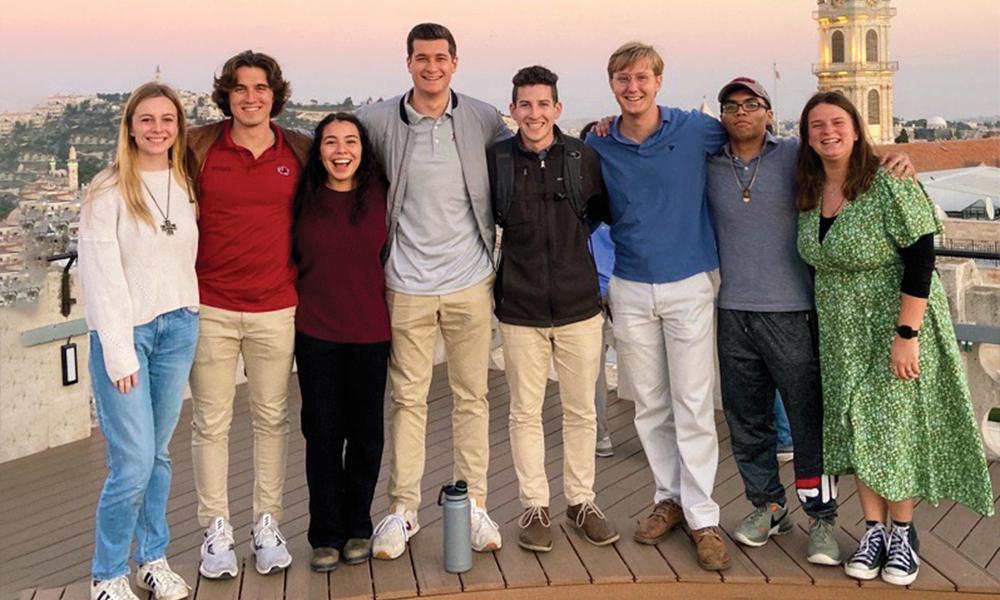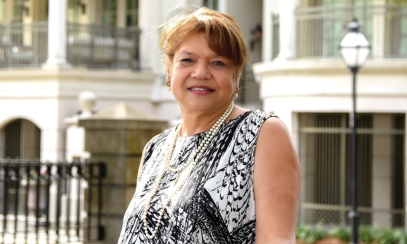
Fostering Vocations With the Holy Land Pilgrimage
Father Rhett B. Williams is director of the Office of Vocations, pastor of St. Thomas More Church in Columbia and chaplain at University of South Carolina. In December 2022, he visited the Holy Land with a group of students from USC, and the Serra Club interviewed him about the experience.
Father Rhett B. Williams is director of the Office of Vocations, pastor of St. Thomas More Church in Columbia and chaplain at University of South Carolina. In December 2022, he visited the Holy Land with a group of students from USC, and the Serra Club interviewed him about the experience.
What were your hopes for the pilgrimage before you departed for the Holy Land?
I established this trip at the end of my first year at USC as a way for seniors and graduate students to experience the Holy Land and its graces at the end of their penultimate semester of studies. The purpose is to allow them to come face to face with the reality of their faith, how incarnational and powerful it is and then let that experience affect the big decisions that will soon be made in their lives. Going after midterms in December of their last year at USC also allows them to come back and share what they experienced with the students around them in their final semester.
What were some of the main sites you visited?
We visited all the main holy sites of Christianity as well as some of the old Jewish sites. For the most part, the pilgrimage followed the major stages of the life of Jesus Christ beginning with the annunciation in Nazareth, then off to Galilee and culminating in Jerusalem with the walking of the stations of the cross and the visit to the Holy Sepulchre (the church that houses Calvary and place of the resurrection) for Mass on the last day. In addition, we were able to visit other sites like Jaffa, Caesarea Maritima, Mt. Carmel, Jericho, Qumran, the Dead Sea, etc.
What were your impressions as you visited those sites?
Impressions in the Holy Land are only as strong as the time you have to reflect on them. We made sure to give at least a little time at each spot for prayer, but we always ended our day with a holy hour wherever we were staying. This gave time for the students to pray over what they experienced each day and take something from each of the spots. Otherwise, the holy site will just overwhelm and combine in a jumble of holy sites all wrapped into one. Personally, outside of the Church of the Holy Sepulchre, I find the Basilica of the Annunciation the most unexpectedly powerful spot, along with the Church of All Nations in the Garden of Gethsemane. Also, Mt. Tabor is my favorite quiet spot at the place of the transfiguration.
What else did you do on the trip?
There were quite a few special events that this group was able to partake in, yet most groups do not experience. They were able to spend a holy hour by themselves in the Garden of Gethsemane, spend an overnight in the Church of the Holy Sepulchre, have a mixer with the students of Bethlehem University, have an audience at the Latin Patriarchate to watch [me] receive [my] pilgrim shell as a Knight of the Holy Sepulchre, then ask questions to the local bishop and experience the Jerusalem Christmas markets in the Christian quarter. Not a bad set of perks!
What are some of your lasting impressions after experiencing the blessings and challenges of visiting the Holy Land?
A visit to the holy sites changes the perspective of the person, or better said, gives them a concreteness that wasn’t there before. It reminds the pilgrim that Jesus Christ really did walk this earth and really did accomplish what our Church records that he did, both in word and memory. Now these students will have images and experiences to place alongside the Gospel every time they hear it read.
What did you notice about how the students responded?
Probably the most obvious sign since their return is while I am proclaiming a Gospel passage or preaching about a Gospel event, I can see the faces of the pilgrims present at St. Thomas More Church light up as they are recalling images from spots in the Holy Land. That is a great thing to see happen as a priest.
How has the pilgrimage influenced your understanding of vocation?
Simply, every time I go to the Holy Land, it is a reminder that Christ truly was born, died and rose again. Every generation of Christians has recalled and proclaimed that, and my religious vocation is reaffirmed every time I go. It is there that, in a visceral way, I join the venerable predecessors who came before me, stood on the same spot and proclaimed that Jesus Christ is Lord, and he loved us enough to step into the promised land for our salvation.



